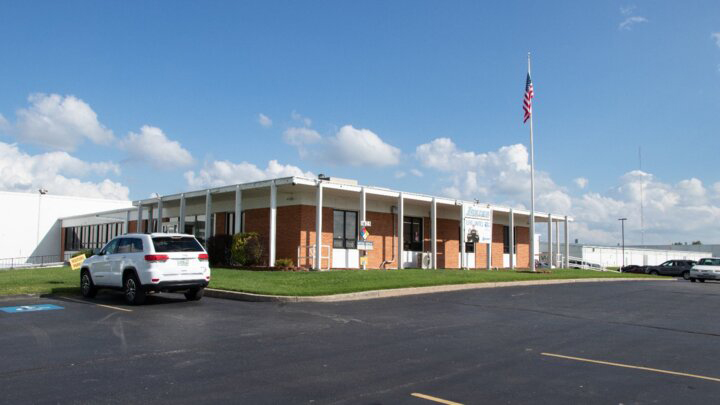
In celebration of National Manufacturing Month, explore Lozier’s plants, people and towns in this series Plant Town History.
“It was scary even 60 miles away,” said Donald Lane, Manufacturing Engineer-Maintenance Supervisory. “It looked like someone came through with a bush hog and mowed the area.”
Lane was the on-site engineer with his previous employer when St. John’s Regional Medical Center built its east tower. Now at Lozier, Lane remembers the 2011, EF5 rated tornado that tore through Joplin on May 22. The damage was so great to the medical center a new one was created.
At the Lozier plant in Joplin, the building was safe, but only by a half-mile.
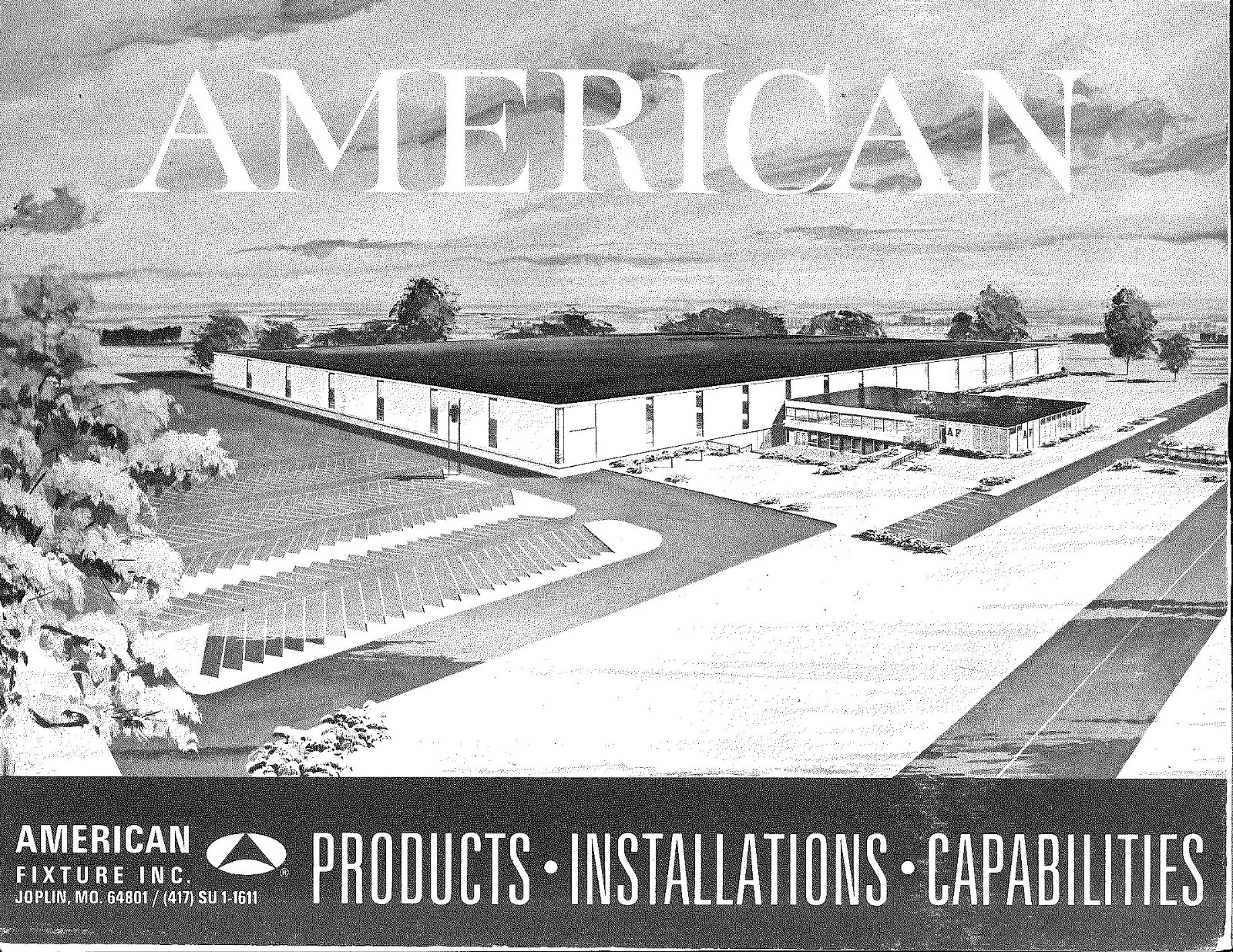
AFI catalog cover with artwork of the Joplin facility.
American Fixtures Inc. relocated from St. Louis to Joplin and built a 250,000 square foot facility in 1964. After four years in operation, Lozier purchased AFI and the Joplin plant, adding an additional 12,000 square feet.
The 1970’s and 80’s saw a lot of expansion in Joplin, with a Distribution Center, saw room, second plating line, welding robots and powdercoat line added. At around 390,000 square feet large, Joplin began innovating.
It developed the Bullnose Shoe Shelf and the Tubular T-system and began production. Two years later, a new one-of-a-kind plating was developed for the same customer, known was Dull Brushed Chrome. The plating replicated brushed stainless steel but was made from mild steel, translating to quality at a fraction of the cost.
The 2000’s brought an end to the new plating method but T-system operations and powdercoat from Lozier’s closing Cedar City plant moved to Joplin. In 2010, one year before the tornado, a 150,000 square feet south DC addition completed, adding shipping capacity and increasing the total plant size to around 440,000 square feet.
“After the realization of the devastation, people went about removing the rubble and started the rebuilding process and hopefully to be better than it was before,” said Frank Stehm, Value Engineering Project Manager.
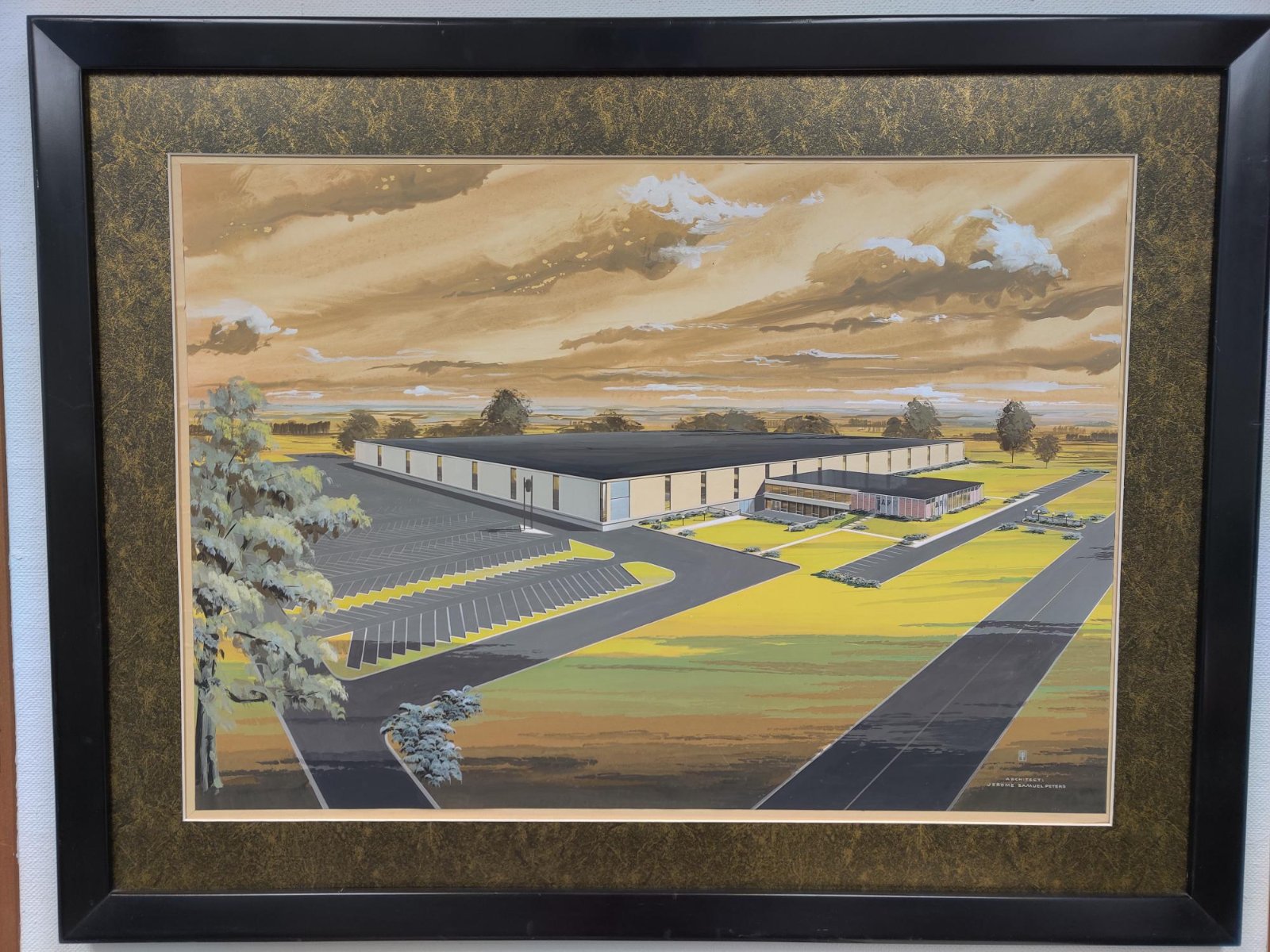
The original painting of AFI’s proposed new site, created in 1964.
Stehm started in Joplin 1977, working his way from Machine Operator all the way to Plant Manager in 2021. Leading significant improvements in Lozier’s product and design, Stehm remembers Joplin’s resiliency.
“We’ve gone through a lot of changes over the years and the people find a way to embrace the change and go about making continuous improvement to make things better today than they were yesterday,” Stehm said. “I think this also reflects what the city of Joplin did after the 2011 tornado.”
Because of the natural disaster, a Walmart on Rangeline was completely flattened. During their rebuilding process, the store fixtures were scheduled to be purchased by Lozier’s competitor. When Walmart reviewed their order, they changed it and the re-built store featured Lozier’s T-system fixtures, supplied by Joplin, which had been producing the product for Walmart since 2004.
“It was a significant event, supplying them with Joplin’s fixtures during the re-build,” Stehm said. “Walmart honored us with the partnership plaque, which is still on display in our main conference room.”
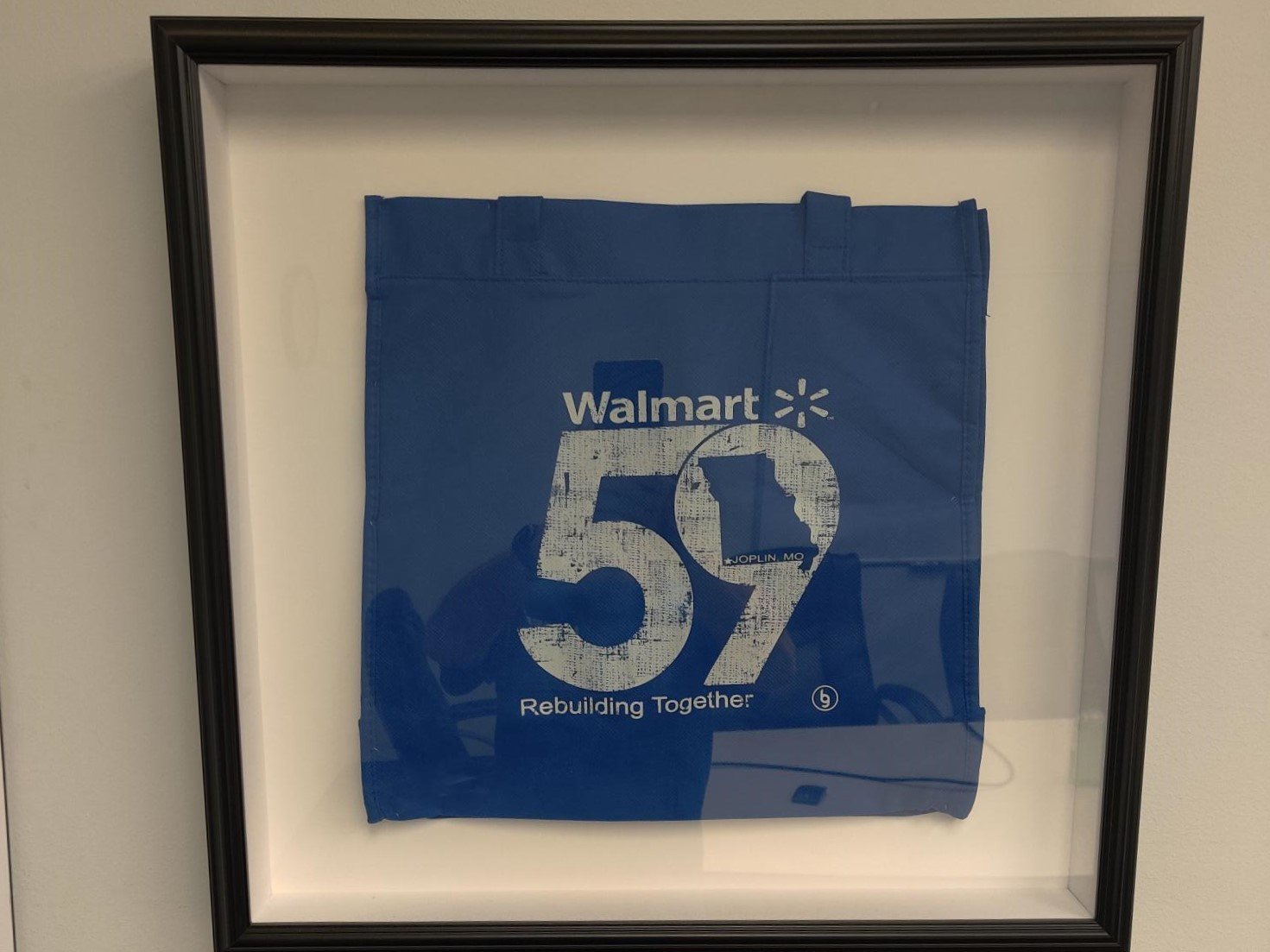
Plaque honoring Joplin’s partnership following the 2011 tornado.
Following the rebuilt of Walmart’s store, the 2020’s were a turbulent time for the plant. Tube manufacturing was transferred to Omaha and Middlebury.
Christopher Thomas, Shipper Receiver captures the resiliency Stehm sees throughout the plant and town, “It has been a revitalization in the area, and I have hear people talk about from outside the company as well as within. The way we have been getting involved in the community has really been big.”
2021 bought Joplin’s conversion from tubular manufacturing to cabinet manufacturing and is now Lozier’s premier site for Self-Checkout (SCO) products.“We are an integral part of setting up the stores that they are going to shop in with their families,” Thomas said. “From the gondola to the self-checkouts, everyone really takes pride in what we do here. It’s about being innovated and being a frontier on the frontlines of gondola and self-checkouts and being a leader in the industry.”
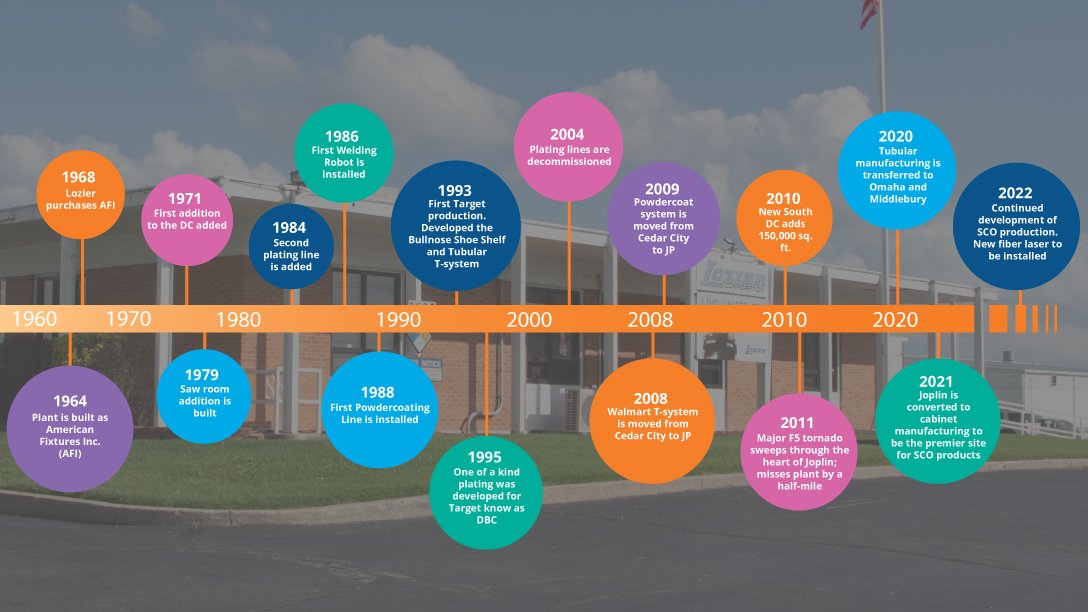
Joplin continues to look toward the future, building on its history of resiliency, innovation and excellence with new equipment and production methods.
The largest tornado in the country since 1950 and $2.8 billion in damage wasn’t enough to stop Joplin.
“Joplin’s culture is one of adapting to change and overcoming challenges,” Stehm said.